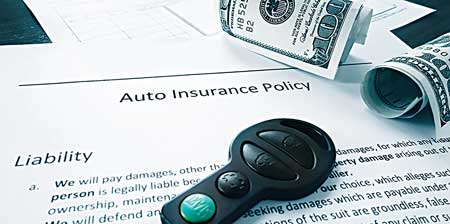

Your standard homeowners and business insurance policies, and the comprehensive portion of an auto insurance policy cover damages, such as a fire, that results from a lightning strike. Some policies also provide coverage for the damage caused by power surges.
That said, it’s far better to prevent lightning damage than to have to deal with the consequences.
A lightning protection system (LPS) provides a specified path on which lightning can travel. The Lightning Protection Institute (LPI) explains how LPSs work in this infographic. A rooftop network of lightning rods or air terminals is connected to a series of down conductors which carry the current down to a grounding network. In that way, the system safely directs the destructive power of the lightning strike into the ground, which leaves the structure of your home or business and its contents undamaged.
Lightning protection is not a “do–it–yourself” project. Contract a UL–listed lightning protection specialist to install the system in accordance with national safety standards.
Electrical surges from lightning can enter a structure via power transmission lines and cause electrical fires as well as damage to your building’s electrical system, your appliances and your home electronics.
Regular power strips offer little surge protection. To assure the best safeguards, UL–listed surge protection devices (SPDs) should be installed to filter and dissipate damaging electrical discharges. Most electric utilities will rent or sell a surge device for the electric meter to “clamp down” on incoming surges; licensed electricians can install similar protection.
To protect valuable electronics like computers, home entertainment centers, gaming systems and smart home technology, install UL–listed transient voltage surge suppressors, Consider unplugging expensive electronics when you know a storm is approaching.
...................................................................................................................................................................

Once you have a clear picture of how you use your car and your priorities, you’re ready to shop for insurance. Generally, it’s a good idea to compare policies from at least three different insurers.
You’ll want to consider fundamental factors such as coverage and price, but it’s also worth evaluating prospective insurers as well. The following are the most important factors to consider.
Try to compare apples to apples when choosing your insurance policy. All of the policies that you review should have the same types and amount of coverage. It is difficult to compare policies, for instance, if one provides $50,000 in property damage liability coverage, another only $30,000, and a third $100,000. Coverages that you’ll want to consider, though some are optional, include:
Check prospective policies, too, for secondary options that could prove beneficial, such as glass coverage which often comes without a deductible or reimbursement for a rental car.
Naturally, when you compare insurance policies, cost will be a top consideration. You may be surprised by how much prices vary, so you’ll want to get several quotes.
In addition to the price of the premium, the actual cost of the policy, look at the payment schedule. Will you incur an extra fee if you pay monthly? Can you get a discount if you pay for a full year all at once?
When you compare prices, be aware of the amount of the deductible–how much you pay out of pocket before your insurance kicks in. Generally, you can lower your premium if you opt for a higher deductible.
While price and coverage may be deciding factors when you purchase auto insurance, it’s worth considering the reputation and financial stability of prospective insurance providers as well. First, double check that an insurer is licensed in your state. You can do this by visiting the website of your state’s insurance division where you can also review information about consumer complaints filed against insurance companies.
In addition, you can check review websites and talk to friends about their experiences with insurers. Finally, take a few minutes to make sure prospective insurers are in good financial standing. Financial ratings agencies will provide this information. Online tools will often provide ratings information as well.